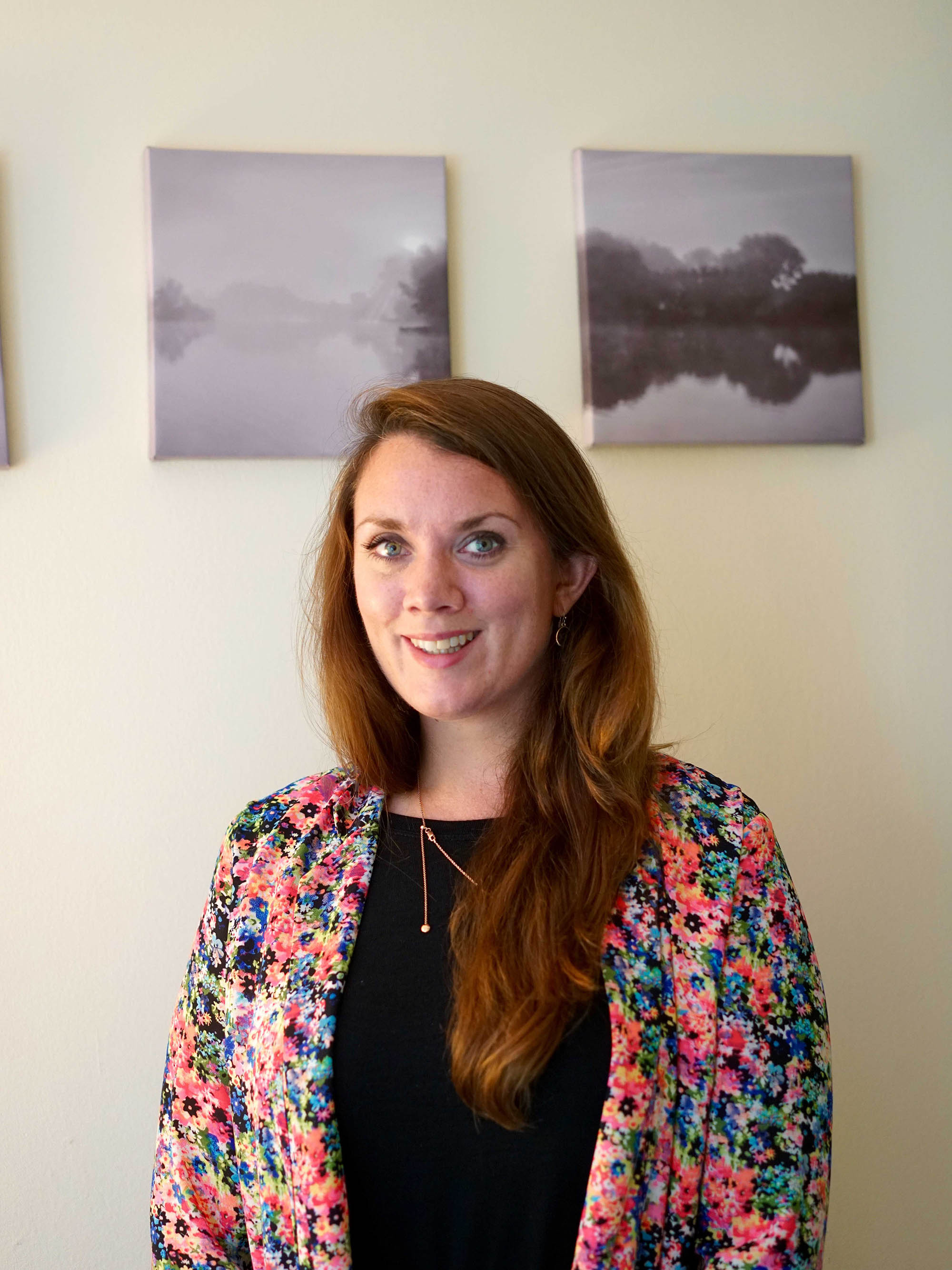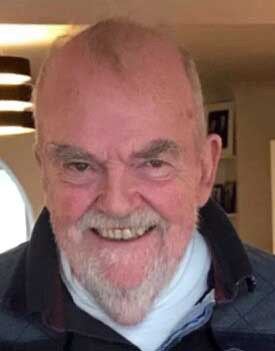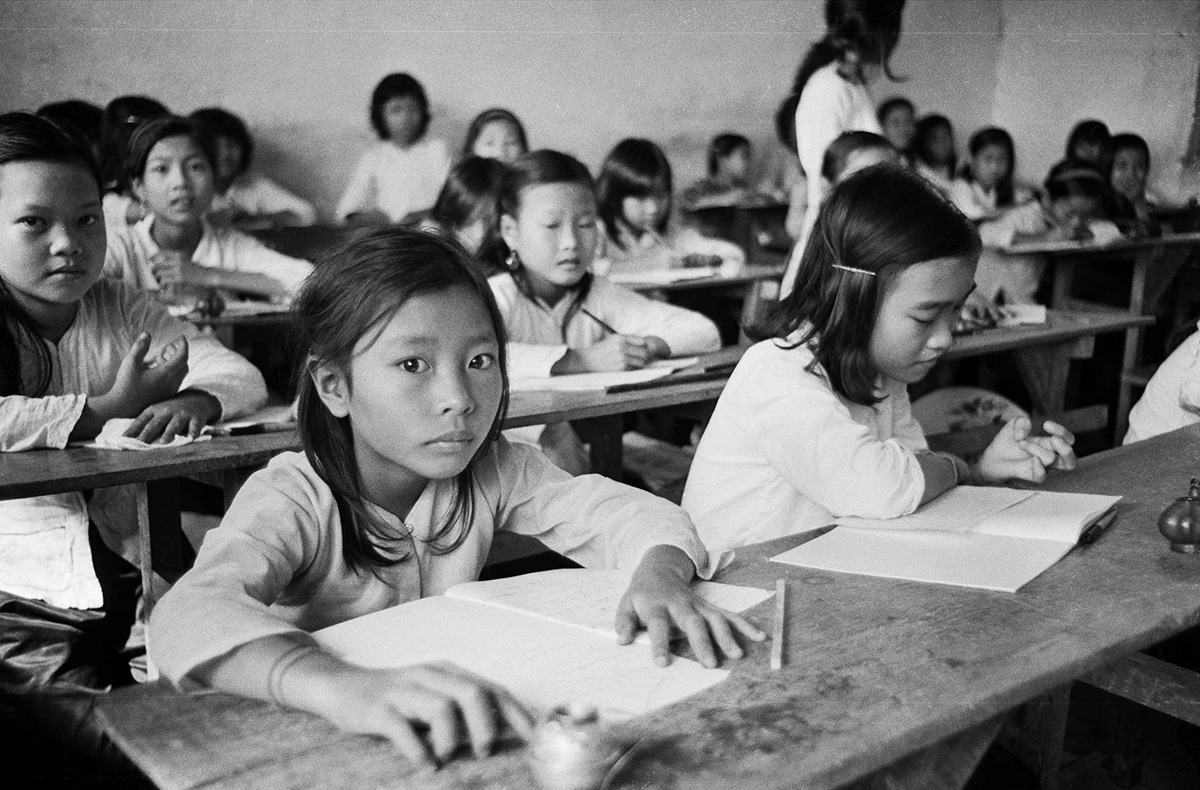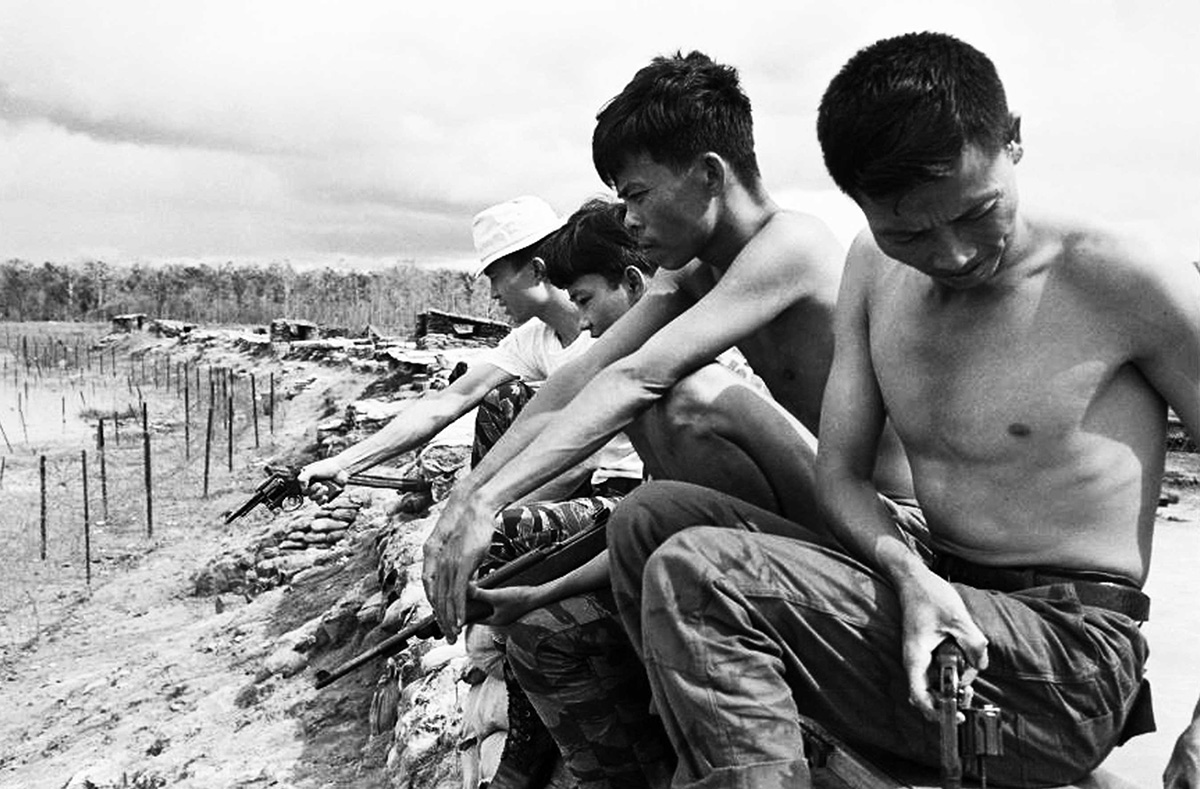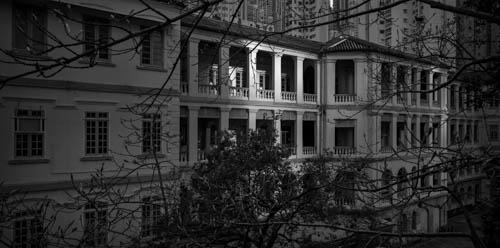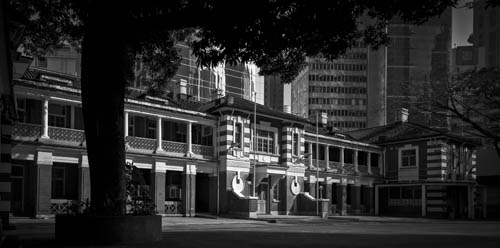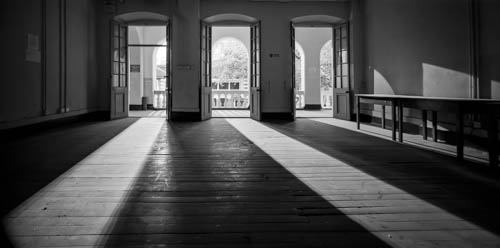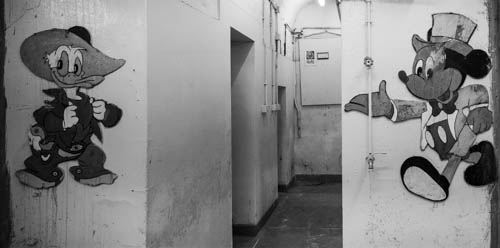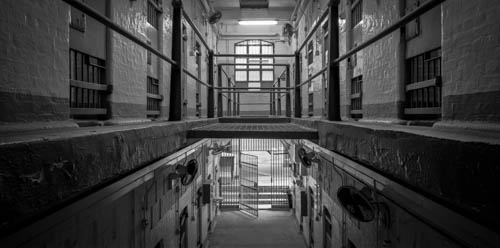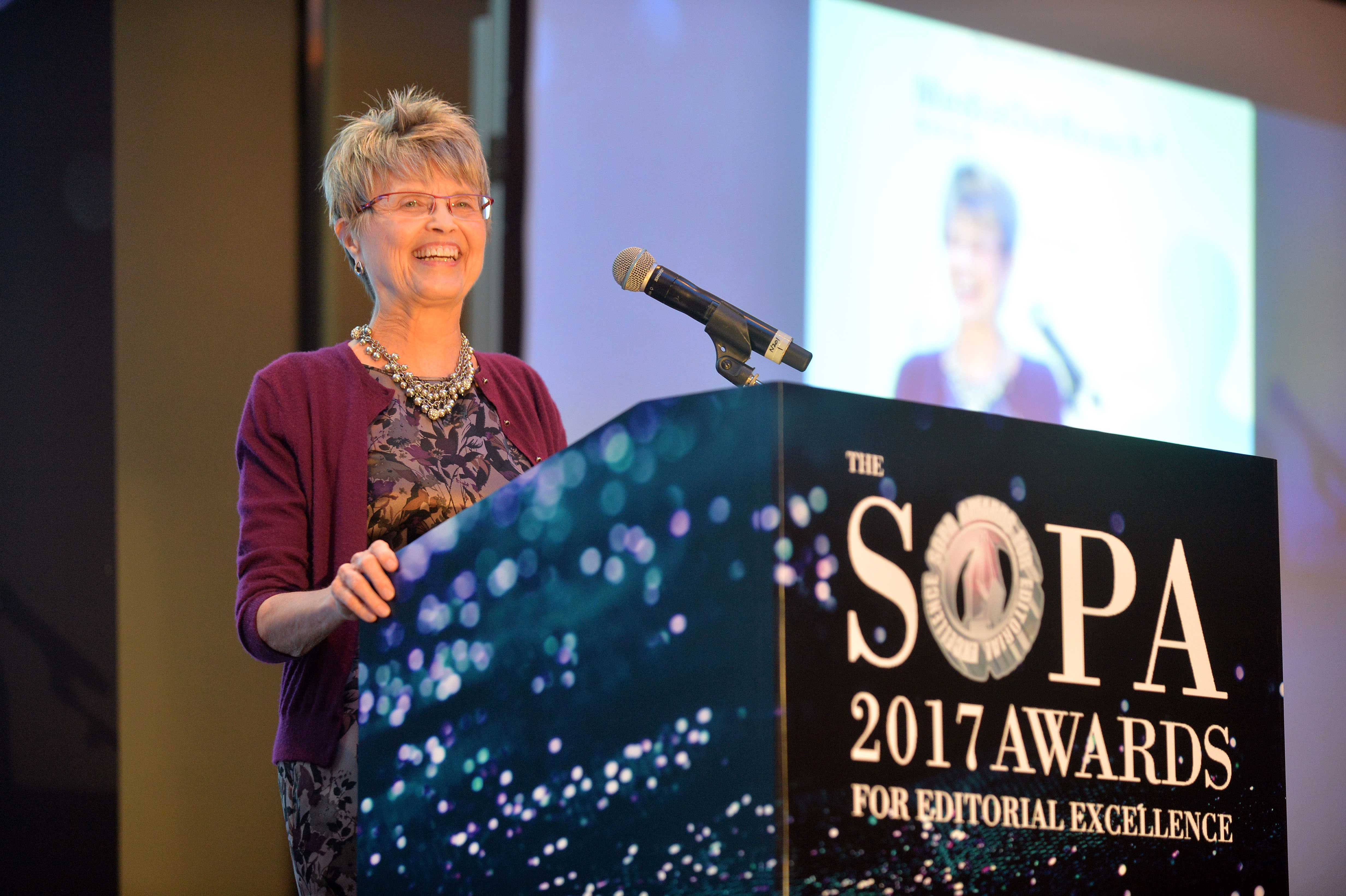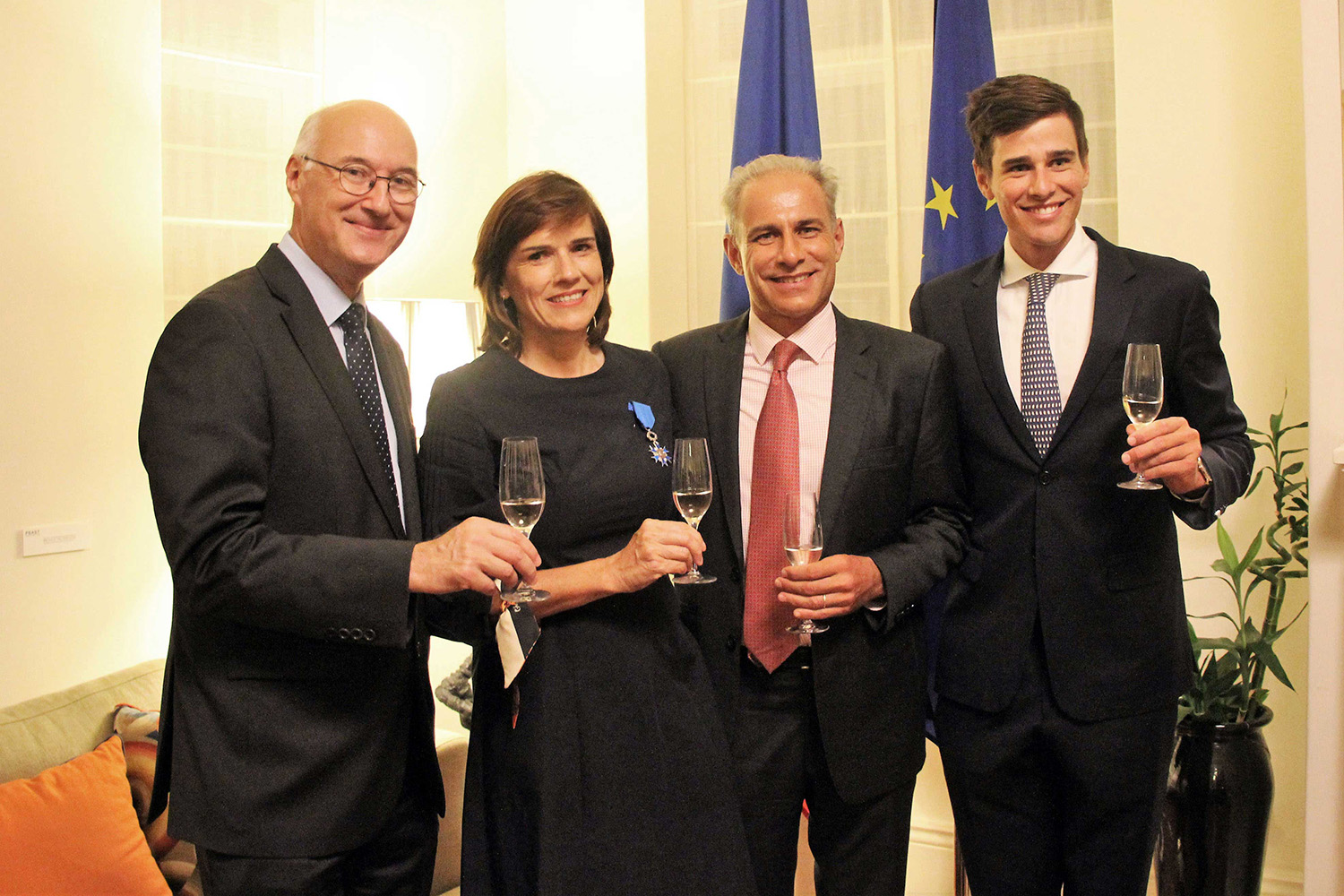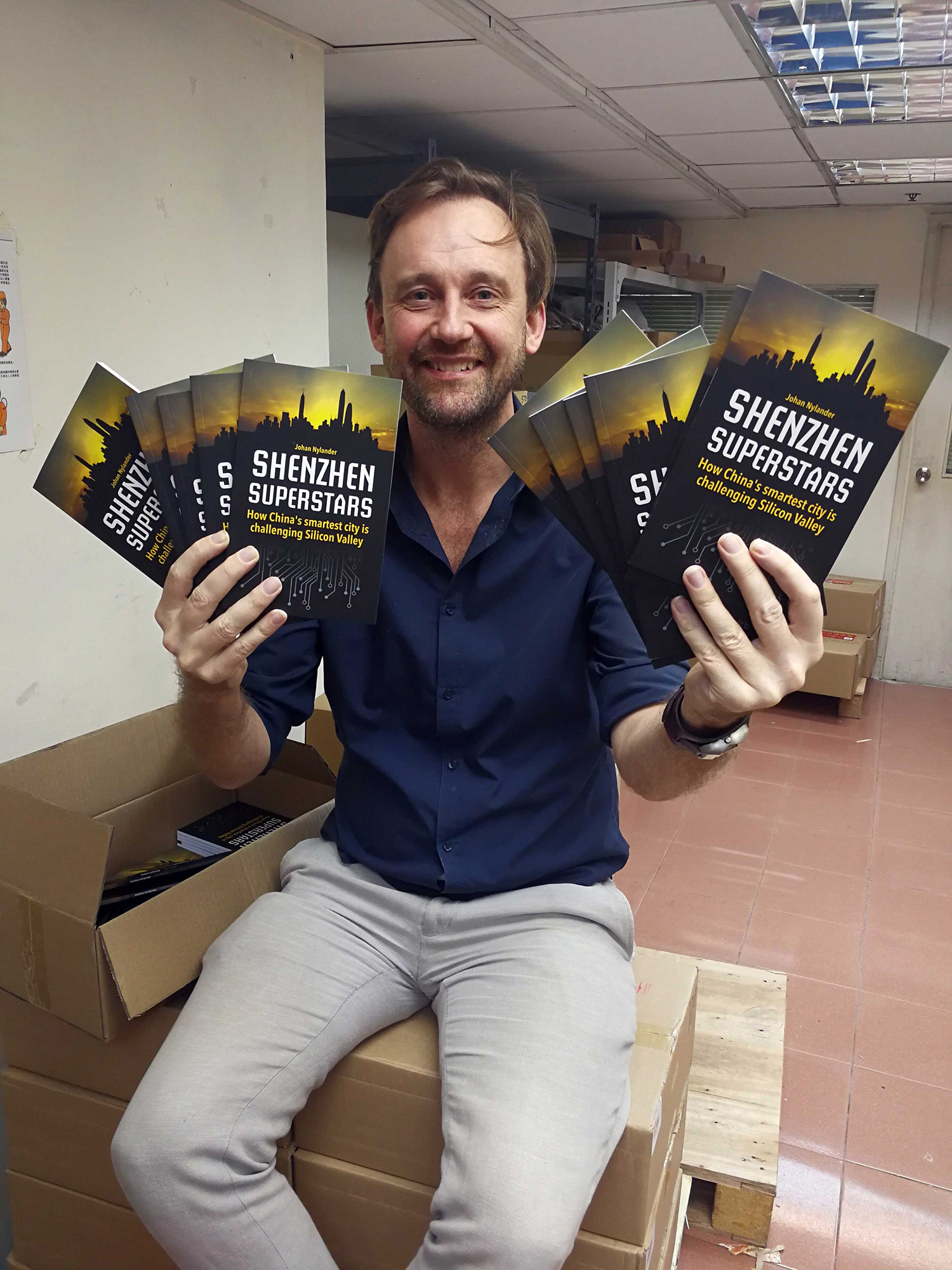Police shut down an event at the FCC Thailand for the sixth time recently. Michael Mackey was there and reports on the Club’s trials and triumphs.
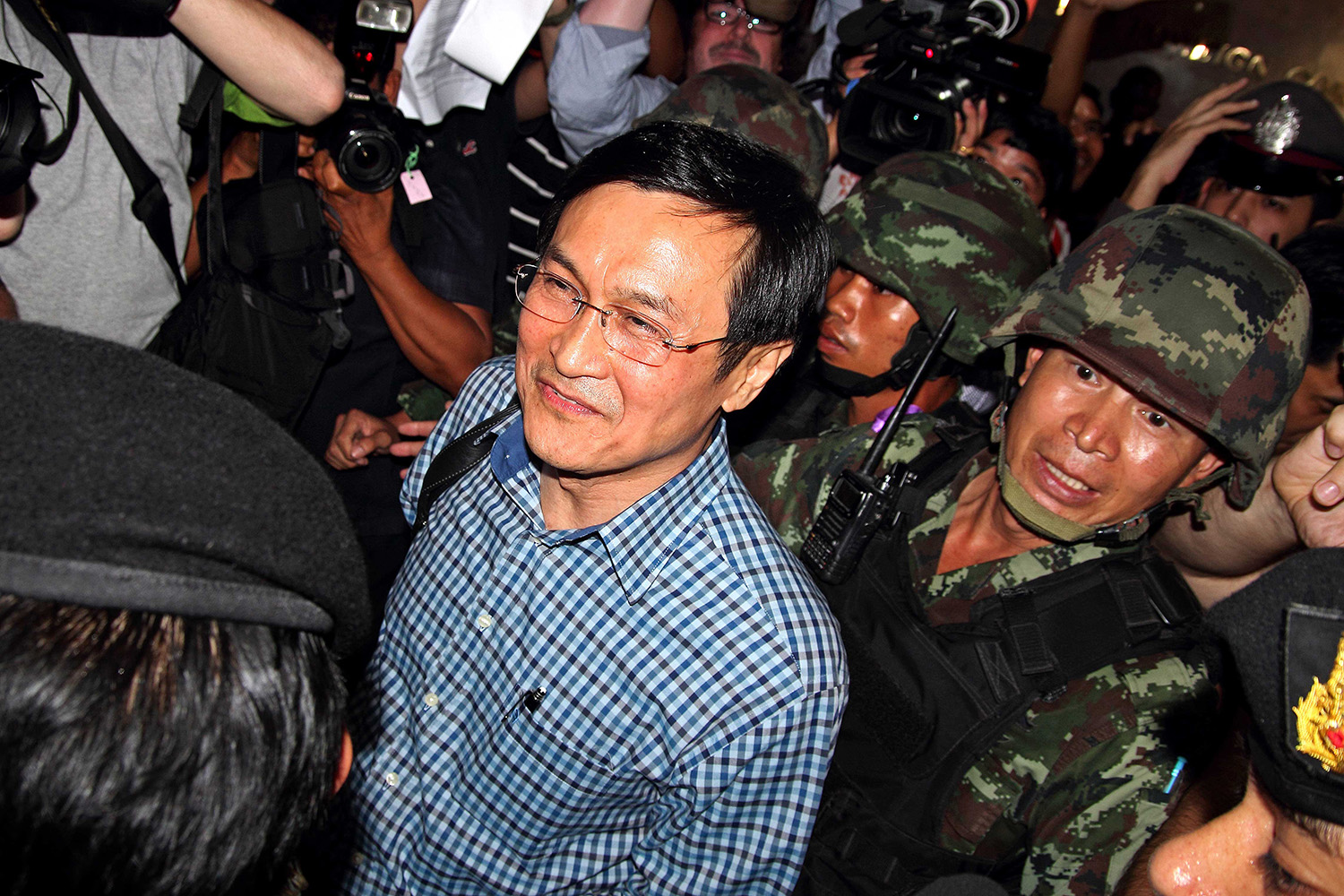
Chaturon Chaisang being led away.
On Monday, September 10, members of the Foreign Correspondents’ Club of Thailand turned up at their club in the early evening for a scheduled discussion about a United Nations backed report on alleged war crimes in neighbouring Myanmar.
They were met by uniformed and plain-clothes police officers under orders from Thai officials to shut down the event.
Inside some people were eating in the dining area as if nothing was happening, and some were at the bar. There were also plain-clothed police and lots of local journalists milling around. Clustered in a corner were, among others, Club president Dominic Faulder in talks with senior officers.
Eventually, FCCT First Vice-President Tassanee Vejpongsa, who works for the Associated Press, read out the cancellation order, which arrived just 20 minutes before the programme was due to start. With over 20 Bangkok police in the room, there was no alternative but to comply.
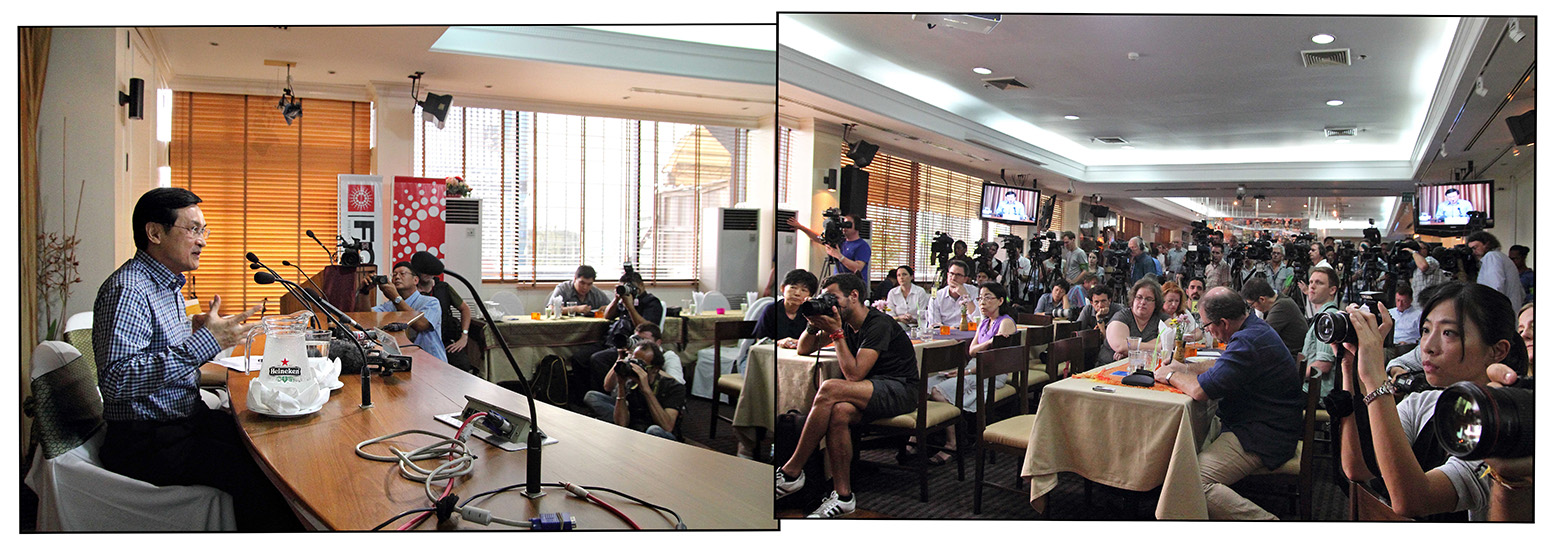
Chaturon Chaisang speaks at the FCCT in 2014 after being ousted from office… and is arrested during his talk and led away.
Faulder then added a statement. It was polite but firm, sticking to the facts: this was the sixth event the Thai authorities had stepped in to stop. Four of these were not organised by the Club itself but outside groups; two were on Human Rights, and two were on Vietnam.
Events on Cambodia, Malaysia, and the Philippines have all gone ahead and criticisms made, but Vietnam lobbies the Thai authorities to prevent certain topics being discussed.
“There was not a complaint from the Burmese embassy as far as we are aware,” Faulder said in his brief statement. The incident was reported by hundreds of news organisations around the world, including in the U.S. by both Fox News and The New York Times.
The police, some of whom were Special Branch, apparently didn’t know who was responsible – just that the order came from somewhere higher up.
The same day, the FCC Hong Kong issued a statement of support for the Bangkok club, including: “In a letter ordering the FCCT to cancel the event, the Thai police stated that the discussion might be used by ‘third parties’ to cause unrest and endanger national security. There are no grounds whatever for such suspicions. The club has regularly held orderly and informative panel discussions on current affairs for over 62 years, and these have never led to any unrest or subversion.”
Despite incidents such as this, the FCCT remains a place of open debate – while facing the same problems as many other media clubs.
Given the strictures put in place when Thailand’s military took power back in May 2014, which come on top of some already onerous laws about how some topics can be reported, the FCCT has continued to put on good and varied programmes that are frequently topical and challenging.
“This is quite a prickly government – particularly at the beginning,” Faulder, the FCCT’s president for the past two years, said in an interview four days before the events of September 10.
Things did not get off to a good start four years ago with the military arriving en masse to arrest Chaturon Chaisang, then the just-ousted education minister, technically a fugitive, as he spoke at the FCCT’s central Bangkok premises. However, there was – as Faulder noted – “genuine media interest,” in what Chaisang would say.
Although the club has good relations with the Ministry of Foreign Affairs, and problems a few years ago with media visas have largely been resolved, relations with the cabinet have been “close to non-existent”, as Faulder put it. There has been no attempt to close the Club, but the cold shoulder it gets from the top is obvious.
Only two ministers have come to speak in four years – a drought compared to previous years. There has been no prime minister’s dinner, a fixture in most Thai premierships over the past 40 or so years. Former Prime Minister Yingluck Shinawatra came twice, and former PM and Leader of the Democrat Party Abhisit Vejjajiva three times. Of Thai Prime Minister General Prayut Chan-o-cha, Faulder said: “He hasn’t shown the slightest interest in talking to us.”
Plenty of other speakers have, though, allowing the FCCT to put on events allowing some serious issues to be discussed. These are usually panel discussions with as many as five members, but usually three or four, allowing different views to be heard and politely probed.
They are also firmly moderated, with Faulder, a burly, imposing figure, leading a style of chairing best described as no-nonsense but essentially fair. This also extends to writing the flyers for events.
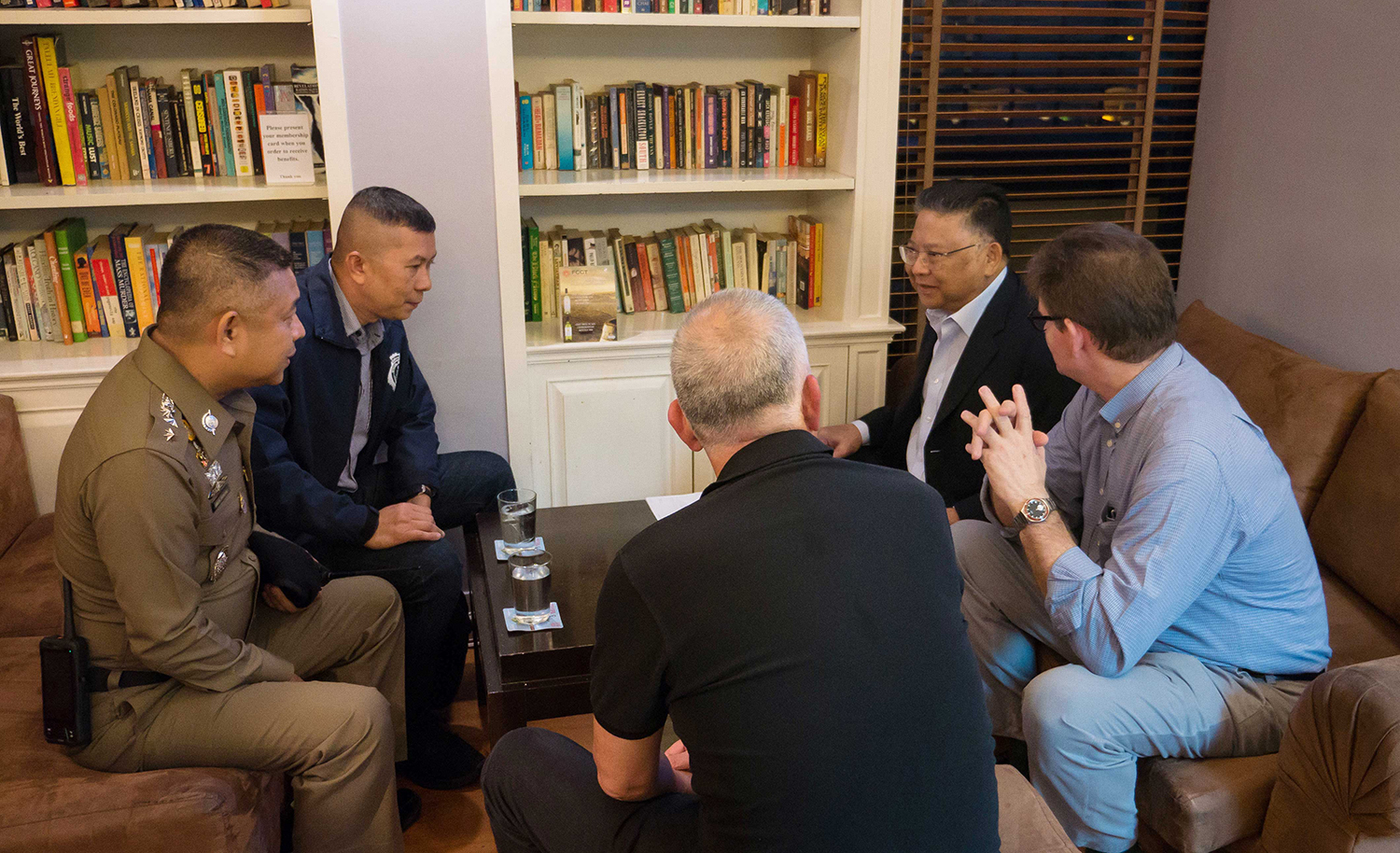
Dominic Faulder (right) with Club Manager Richard Holt on his left and retired diplomat Kobsak Chutikul negotiate with police.
“One of the things I lectured everyone on was not writing inflammatory blurbs. We want balance,” said Faulder. The FCCT, he stressed, is not an activist organisation, and does not belong to either the Red or Yellow side of the Thai political spectrum. Neutrality has enabled it to carry on doing events about Thailand and the region.
One good example of panel topics is Thailand’s road safety – it’s appalling. One on “Thai-ness” was lighter in tone but swung a light across the issue of Thai identity, what it means and what it implies.
Panels have also trodden on serious ground. One of the more recent of these was up-and-coming politicians discussing how they saw future developments. This packed them in; around 260 people attended well ahead of the ban on politics being lifted.
“There was no effort to stop that topic. I think everybody was interested in having an opportunity to hear what these people have to say,” said Faulder, who works for Nikkei Asian Review.
He also organised some crackers: a lengthy and illuminating discussion of the events of October 1976, a crunch time in Thailand’s turbulent history, was one. A fascinating programme on the Chinese in Thailand squeezed in seven speakers, and could have gone on all night. Indeed, the FCCT has not lacked for stimulation during what could have been a very fallow period.

Members and guests at FCCT watch as the planned talk on Myanmar is cancelled 20 minutes before it was due to begin on September 10.
So there has been a steady stream of panels and regular documentary nights that deserve honourable mention that have kept debate alive, and on occasion added to it. Some, however, have hit the wall.
One of these was about a historic bronze plaque that went missing from Royal Plaza in the old part of town. This small piece of metal, marking the spot where the end of absolute monarchy was announced after a coup in 1932, disappeared under circumstances best described as unusual and still needing proper explanation.
Although the programme was ordered off by the police on instructions from much higher up, there was enough warning for an event on press freedom to be substituted.
Michael Mackey is an Absent Member of the FCC Hong Kong
Flak jackets, visas and the age issue
Like all press and media clubs, the FCCT has many pressures to contend with. Whilst correspondent numbers at the Club have remained fairly constant at around 85, there has been a major loss in the journalist category, from about 130 to about 70. Freelancers are also noticeably diminished from a decade ago.
A reclassification by the Thai authorities of many photographers and videographers hasn’t helped membership. They were no longer accepted for accreditation as journalists, and told to get business visas. Discussions with the FCCT’s professional committee helped sort out some of the problems, and the foreign ministry’s online accreditation system is greatly improved. Problems with regard to the legal importation of flak jackets, however, continue.
Within the membership, there has been a slight shift from Western journalists and a rise in Asian journalists. Nikkei and other Japanese news organisations have a growing presence, as increasingly do the Chinese media. Among traditional media, there is also a rebalancing away from youth towards more mature individuals. “We have a problem with an ageing membership demographic,” acknowledged president Dominic Faulder. He is keen to make the club more attractive to younger members. Two years ago it was starting to look a bit tired and weary. Some changes were made – new air-conditioning, new tables, new floor coverings, a spruced-up outdoor terrace, and a revamp of F&B including Thai craft beers, excellent Thai fare, and an all-day cooked breakfast.
“It’s a much more pleasant place to visit now,” said Faulder. “Everybody notices. The thing we have to do now is encourage people to make the effort – and not use traffic or heavy rain as excuses to stay at home.”



